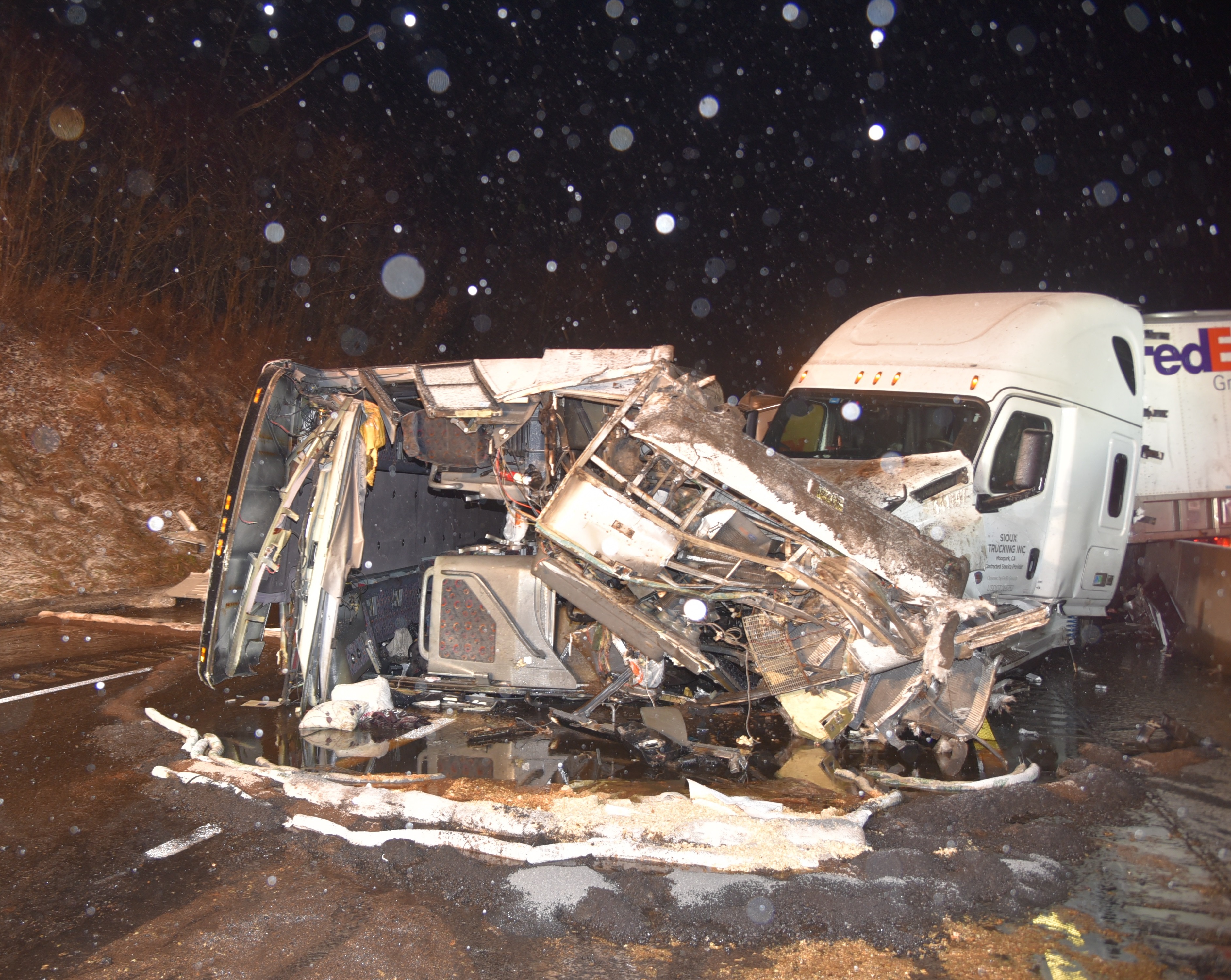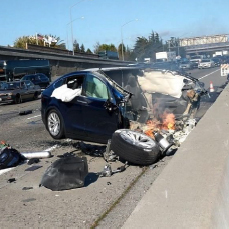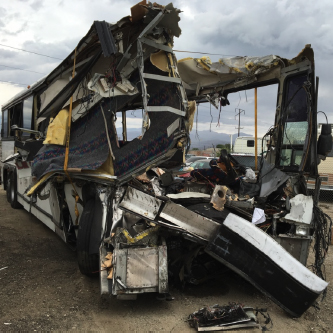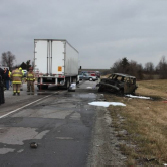Each year, thousands of people are killed and injured in preventable crashes. Collision-avoidance and connected-vehicle technologies can help mitigate the severity of such crashes or even stop them from occurring in the first place.
Collision avoidance technologies include forward-collision warning and automatic emergency braking, which can warn the driver of an upcoming hazard and act to stop the vehicle if the driver fails to respond. Most passenger vehicles and commercial vehicles (such as heavy-duty trucks and school buses) on the road today are not equipped—nor required to be equipped—with such life-saving technologies. Moreover, the National Highway Traffic Safety Administration (NHTSA) has not developed comprehensive performance standards for these technologies, nor does it effectively evaluate them and include this information in its vehicle safety ratings.
Connected Vehicle technology, or V2X, relies on direct communication between vehicles, and between vehicles and infrastructure and other vulnerable road users. When compared to vehicle-resident sensor systems, such as forward CAS, V2X technology has considerably longer conflict detection distances, the ability to see around corners or through objects, and is unaffected by inclement weather. Although both V2X technology and vehicle-resident sensor systems, such as forward CAS, have the capacity to mitigate and prevent crashes on their own, they can provide greater safety benefits when combined. To achieve this life-saving benefit, we recommended the U.S. Department of Transportation implement a plan for nationwide connected vehicle deployment and for NHTSA to require connected vehicle technology in all newly manufactured vehicles.
Lessons Learned: NTSB Investigations
The following crashes and report best exemplify why this safety improvement is needed.
 Multivehicle Crash
Multivehicle Crash
Mt. Pleasant, PA | January 2020
 Collision Between a Sport Utility Vehicle Operating with Partial Driving Automation and a Crash Attenuator
Collision Between a Sport Utility Vehicle Operating with Partial Driving Automation and a Crash Attenuator
Mountain View, CA | March 2018
 Motorcoach Collision with Combination Vehicle After
Motorcoach Collision with Combination Vehicle After
Traffic Break on Interstate 10
Palm Springs, CA | October 2016
 SIR-The Use of Forward Collision Avoidance Systems
SIR-The Use of Forward Collision Avoidance Systems
to Prevent and Mitigate Rear-End Crashes | May 2015
Stats to Know
38,824
Lives lost in motor vehicle crashes in 2020; the highest number of fatalities since 2007 (Source: NHTSA)
50%
Estimated rear-end collisions that could be prevented if vehicles have forward-collision warning and automatic emergency braking systems (Source: IIHS/HLDI)
25+
Years the NTSB has been advocating for collision-avoidance technologies (Source: NTSB)
Our Solutions-Take Action Now!
We need more vehicles equipped with these life-saving technologies, and vehicle and fleet owners should be more informed about their benefits.
Regulators should:
- Complete standards for collision-warning and automatic emergency braking (AEB) systems in commercial vehicles and require this technology in all highway vehicles and all new school buses.
- Develop performance standards for connected-vehicle technology and restart the proposed rulemaking to require this technology be installed on all newly manufactured highway vehicles.
- Improve consumer awareness about collision-avoidance systems available in passenger vehicles by improving how these technologies are tested, evaluated, and rated in the New Car Assessment Program’s 5-star rating system.
Vehicle Manufacturers/Dealers should:
- Install and make standard in all vehicles forward-collision avoidance systems that, at a minimum, include a collision-warning component. They should not just be options sold as part of expensive add-on packages.
- Educate consumers on the capabilities and limitations of forward-collision avoidance systems.
Drivers should:
- Buy vehicles with collision warning and AEB systems, and learn how these systems work to understand their limitations. There is no replacement for an alert driver. Collision-avoidance systems can help drivers avoid crashes in some scenarios, but drivers must still always remain alert.
See our specific detailed
recommendations.
Updated December 23, 2022
